The only draft horse developed in America comes from Iowa. Is it ready to be state horse?
It all started more than a century ago on a little farm in Iowa with a draft horse mare with the unassuming name of Old Granny.
Farmers began to notice something peculiar about Old Granny’s offspring. Almost all the foals the Story County mare bore were distinctly cream colored.
Now, more than a century later, Iowa legislators stand poised to designate Old Granny’s progeny as the Official State Horse of Iowa.
More: Have Iowa lawmakers finally hooked a state fish?
Not only were draft horses critical to the agricultural development of the state during the pre-tractor era, but the cream horse breed is the only one developed exclusively in the United States, according to the American Cream Draft Horse Association.
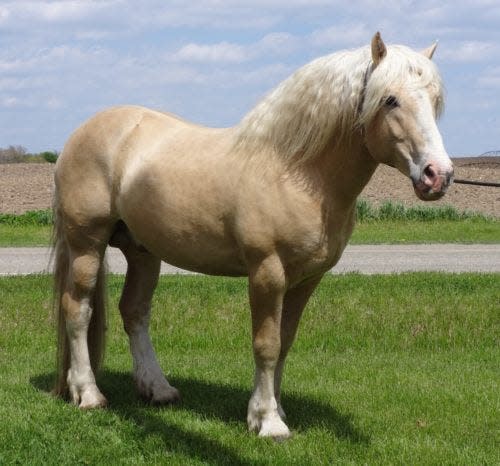
Today’s cream draft horses are a rich cream in color with pink skin, amber eyes, and white manes and tails, with some white markings being desirable. The pink skin trait is important in producing the desired cream color, the association says.
Creams are medium-to-large horses, averaging 15-16.3 hands (5 to 5 1/2 feet) at the withers. Mares average 1,600 to 1,800 pounds. and stallions can range from 1,800 to 2,000 pounds, according to a description by The Livestock Conservancy.
With a worldwide population estimated to be only about 500, the cream horse’s status is considered “critical,” the conservancy says.
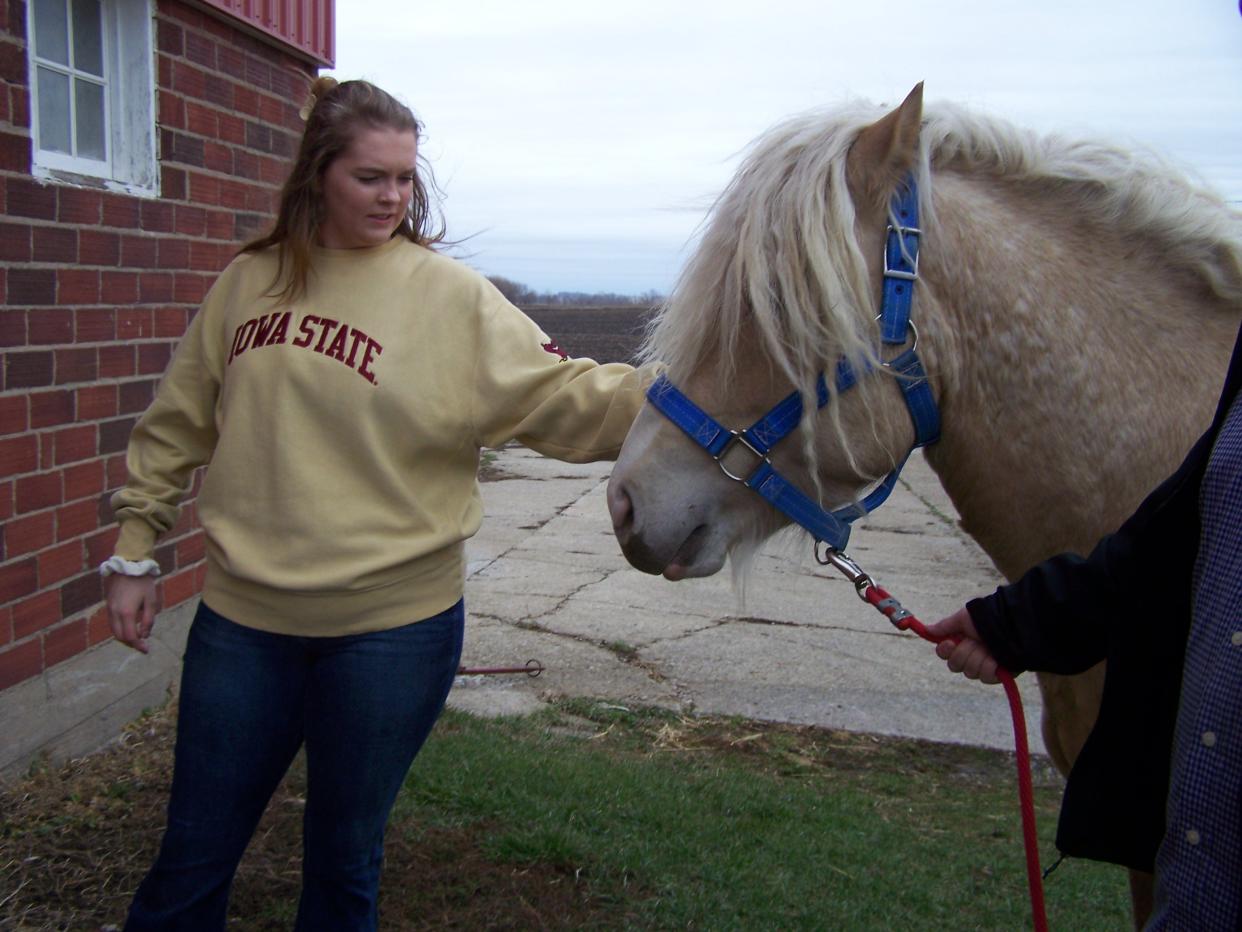
Breed's resemblance to Roy Rogers' Trigger drew enthusiast
Tony Stalzer of Zearing is an American Cream Draft Horse owner and an enthusiastic advocate of the breed. Stalzer said he first became aware of the cream draft horse decades ago after seeing one on the Avenue of Breeds at the Iowa State Fair.
“I was always a fan of Roy Rogers as a kid and his palomino horse Trigger and that’s what these horses reminded me of, with the cream color and white manes. I knew I had to have one,” Stalzer said.
Knowing that a buddy of his down the road, Butch Sowers, had some of the horses, he quickly got in contact.
More: Equine stars of 'Yellowstone' bring Iowans' passion for horses to a healthy gallop
“I called Butch and said I really wanted to buy one of these and he said, 'You can’t buy one, you have to buy two so you have a team,'” Stalzer said.
Since then, the two have partnered in raising cream draft horses.
Radcliffe farmer credited with perpetuating the breed
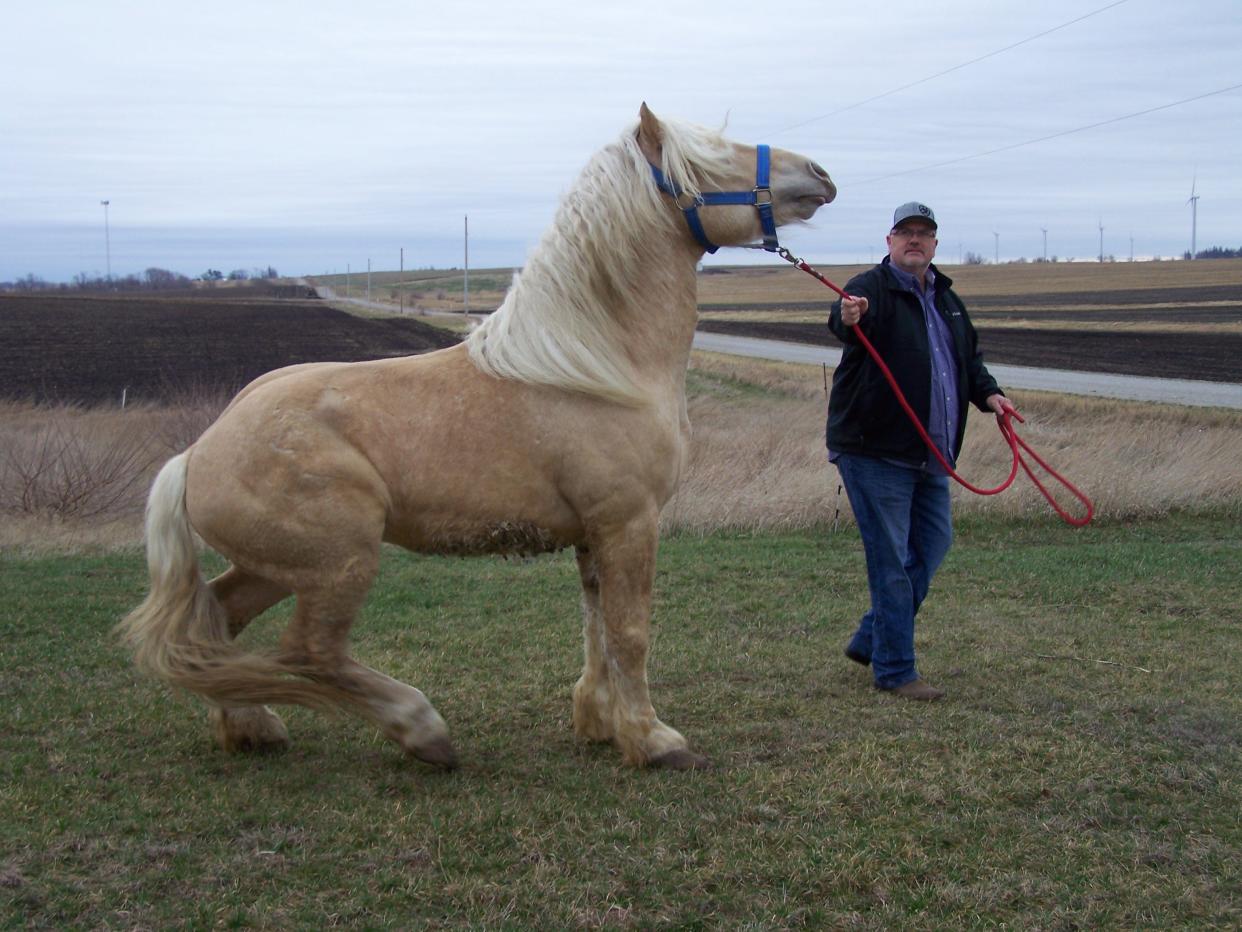
The cream draft horses began to rise in popularity and numbers through the first part of the 1900s, leading to the creation of the American Cream Draft Horse Association in 1944 and the breed receiving official recognition by the U.S. Department of Agriculture in 1950.
One of the founders of the association, Clarence T. “CT” Rierson, who farmed near Radcliffe, began buying all of the mares sired by a stallion named Silver Lace, a great-great-grandson of Old Granny that was instrumental in perpetuating the breed.
After buying the offspring of Silver Lace, Rierson researched and recorded the pedigree of each horse, forming the backbone of American Cream Draft Horse registry.
Rierson’s dedication to the horse is commemorated by a billboard on the edge of Radcliffe proclaiming it to be “The Cradle of the American Cream Draft Horse.” Likewise, a plaque hangs on the barn north of Radcliffe once used by Rierson, noting his work in “legitimization of the breed.”
Rierson was attracted to the breed by its color, said his grandson, Clair Rierson.
“I think the color was the main thing, I really, really do, because that’s what he tried to preserve,” he said.
He said his grandfather, who was not tall, also found it easier to harness the cream drafts, which are smaller than other popular draft horse breeds such as Belgians and Percherons.
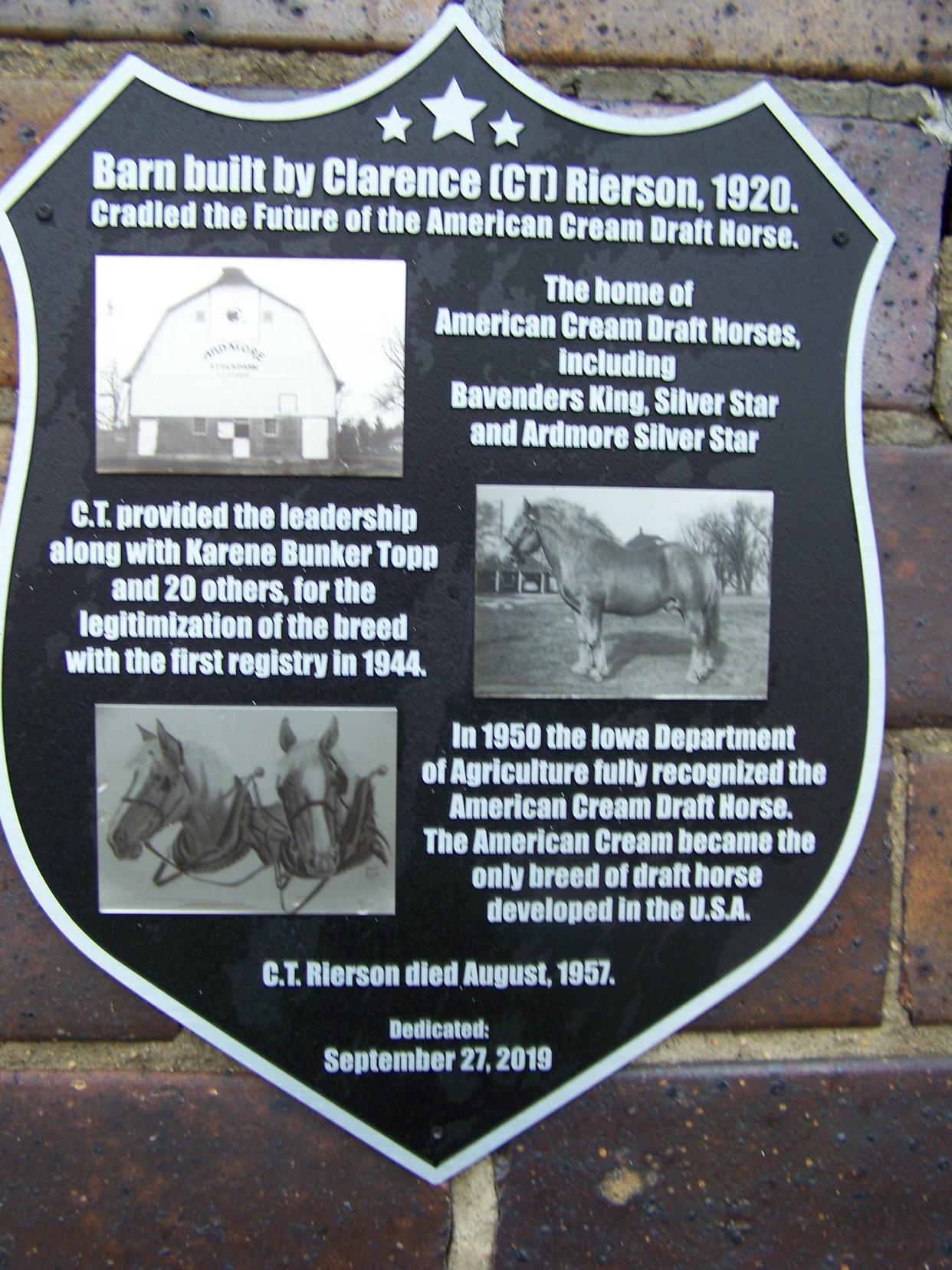
Another trait that the cream horses are noted for is their docile behavior, making them easy to work with and an excellent choice for beginning owners.
“If you treat them like they’re supposed to be treated, they’re just like a big dog. They’ll be your pet forever,” Clair Rierson said.
Draft horses dwindle as tractors take over farm duties
On a dreary, wet day in Racliffe, two of Stalzer’s horses, a gelding named Tucker and a stallion with the distinctively Iowa name of Kinnick, stood in their shared stall. Pet Tucker and it wasn’t long before Kinnick was pushing in for his share of attention, and vice versa.
As the number of tractors working the nation’s agricultural land grew, draft horse numbers began to dwindle. But, a small group of owners kept the small genetic base alive, maintaining survival of the breed, says the American Cream Draft Horse Association. It was reformed in 1982 when a geneticist at the University of Kentucky was able to determine the horses were a distinct breed.
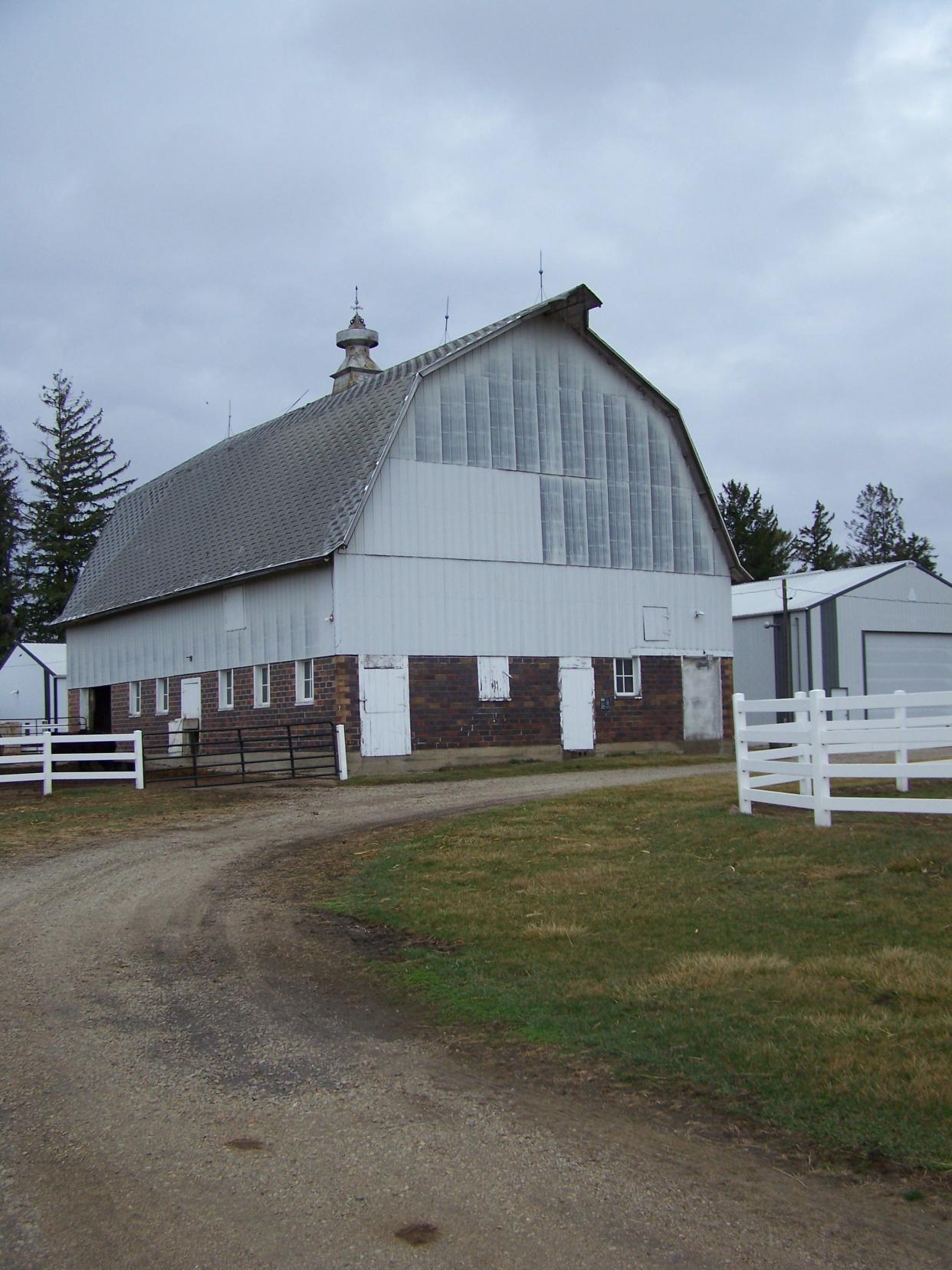
Clair Rierson said his grandfather was still relying on his cream draft horses long after tractors replaced pure horsepower on most farms, using them exclusively to raise hay on 40 acres until 1957, the year he died.
Wendell Luepkes, who raises cream draft horses near Waterloo, said today’s breeders feel a responsibility to maintain the integrity of the breed.
“We don’t really sell these horses, we place them. We find owners who going to help preserve the breed,” said Lupkes.
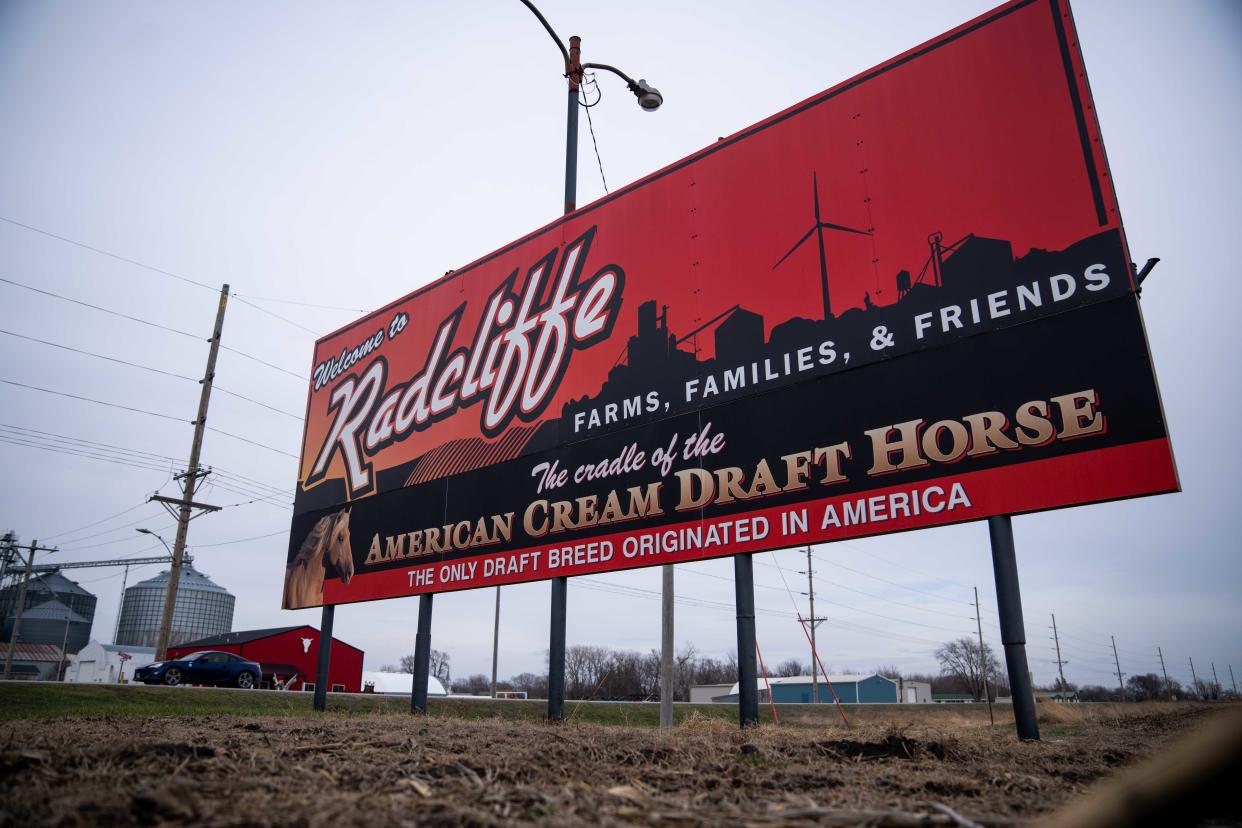
While breeders often aim to make animals bigger through selective breeding, Lupkes said the bylaws of the cream horse association set a goal of trying to keep the breed relatively compact, shooting for an adult of weight of somewhere around 1,600 pounds.
With good looks, great personality and deep Iowa roots, the breed deserves to be elevated to the pedestal of Official State Horse, owners say.
“I know my grandpa would look down from heaven and be so happy” if the Legislature ultimately takes that step, Rierson said .
Kevin Baskins covers jobs and the economy for the Des Moines Register. Contact him at kbaskins@registermedia.com.
This article originally appeared on Des Moines Register: American Cream Draft Horse proposed as Iowa State Horse
